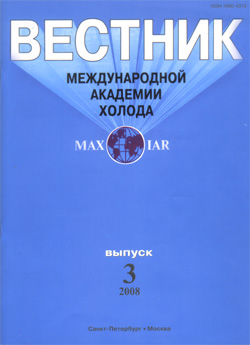
Decentralized air conditioning systems

Annotation
The material of the article is based on the theoretical provisions developed by Prof. A.A. Rymkevich for the implementation of which in the corresponding engineering techniques their further development is required. A decentralized air conditioning system (ACS) is considered for an object that includes two rooms or two working zones within one room with different types of loads. To formalize these loads, initial thermodynamic schemes (ITS) are used, which are described analytically (equations are not given here), and for a visual representation of ITS, an I-d diagram of the moist air is used. The pros and cons of single-zone ACS are disclosed, which are taken as the basic version. This means the energy costs consumed for heat and humidity treatment of air in these ACS are the reference values to which one should strive when comparing them with similar values of costs for other competing ACS options. Decentralized, multi-zonal and combined ACS are considered as competing options for ACS. The fundamental difference between these options is shown. The article deals only with decentralized ACS, which include a central system where the outside air is processed, and a local system that processes the recirculated air in the room. The tasks solved by local ACS are disclosed, depending on which these systems are divided according to their functional characteristics (i.e., according to the task or function they perform) into two groups: adjacent systems and (zonal) closers, the fundamental difference between which is in their influence on the change in loads in the premises, and consequently, on the ITS position change on the I-d diagram. It is shown which recirculation systems can perform the functions of adjacent systems and how they should be selected for decentralized ACS. The mechanisms of combining ITS of premises by means of adjacent systems into a common ITS are disclosed on the example of one of the combined computational zones. The content of the concept "the room is oriented towards central air conditioning" is revealed. The style of presentation of the material and the terminology used correspond to the works of prof. A.A. Rymkevich.
Keywords
Постоянный URL
Articles in current issue
- The influence of the equivalent sand roughness of compressor impeller on the characteristics of centrifugal compressor low-emission stage a numerical analysis
- Efficiency of the thermodynamic cycle of absorption lithium bromide refrigerating unit with two-stage absorption and three-stage generation of the refrigerant vapor with bound mass flow
- Boundaries of thermoacoustic instability in the thermoacoustic engine with cryogenic cooling
- Structural and technological diagram of a nitrogen cooling system of liquefied methane for refueling a medium-class launch vehicle
- Decentralized air conditioning systems
- Hygroscopic properties of water-soluble anthocyanin complexes isolated from fruit and berry raw materials
- Analysis of temperature field for starch or pectin-containing raw materials under controlled thermal effect
- Microbilogocal aspects of safety for the biotechnology of the Carotinka cream fondant
- Method of optical-electrochemical biotesting in assessment of antibiotic properties of various essential oils
- Technological features of the yeast puff pastry made from creamery butter
- Mathematic modelling cryolithozone formation in waterlogged soils
- Experimental studies on the intensity of heat transfer in organic viscous media
